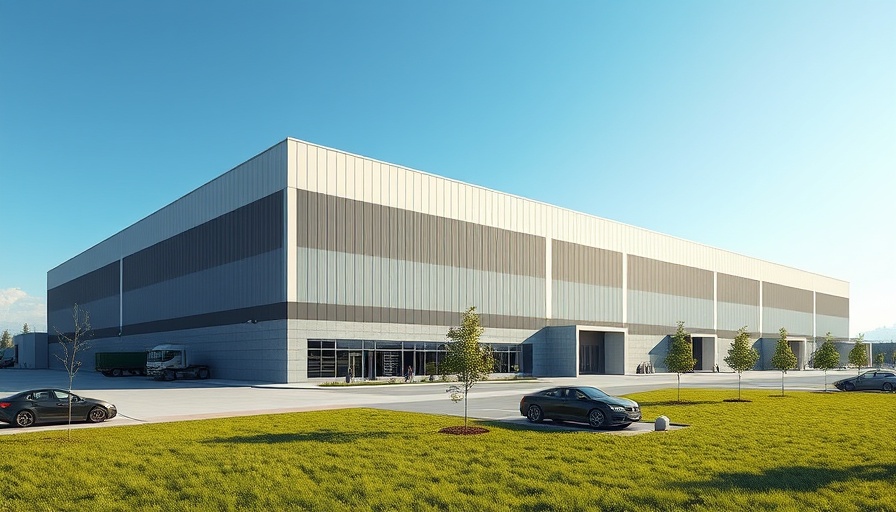
East Coast Growth: Driving Innovation in Key Sectors
The Eastern United States is undergoing a remarkable renaissance, proving to be a pivotal region for growth across vital industries such as life sciences, manufacturing, and technology. This momentum is spurred by strategic initiatives that blend public and private sector objectives effectively. States from New Jersey to North Carolina are leveraging their unique strengths—such as leading biotech hubs and robust manufacturing capabilities—to attract investments and create job opportunities.
Florida: A Beacon of Economic Success
Central Florida stands out notably in this economic landscape. The city of Orlando is not only surpassing the $200 billion mark in real GDP but is also leading the nation in job growth, adding 37,500 jobs in the last year. This 2.5 percent increase highlights the region’s attractiveness to businesses. The news is not all about the glitz of theme parks; industries like clean tech and logistics are burgeoning. Recent investments, like NXTPoint Logistics' new 3PL distribution center in Tampa, exemplify this growth trajectory. Even software giants, such as Kandji, are drawn to the vibrant economy by establishing their East Coast headquarters in Coral Gables.
Tennessee: Fostering a Competitive Edge
Tennessee is positioning itself as a formidable player by attracting manufacturers through value and infrastructure enhancements. Recent expansions from major manufacturers—such as Hyosung HICO and ABB Electrification—illustrate the state's appeal. The $238 million facility being developed by HVAC leader AAON in Shelby County is another testament to the state's success in drawing significant investments. With a steady stream of job creation, Tennessee illustrates how targeted economic policies can stimulate growth.
North Carolina: The Life Sciences Leader
Across the border, North Carolina continues to demonstrate incredible growth within its life sciences sector. The state recorded over 160 economic projects last year alone, capitalizing on $16 billion in investments and creating more than 17,000 jobs. Companies like Genentech and Toyota have recently announced expansions, reinforcing North Carolina's reputation as a leading destination for biotechnology and manufacturing. These strides not only showcase the state's capabilities but also emphasize its role in global health and technology advancement.
Georgia: Revitalizing Rural Areas through Investment
Georgia remains unparalleled in fostering economic development, particularly in rural sectors. The state has supported 429 facility expansions and new locations, culminating in over $20 billion in investments and nearly 27,000 new jobs. This focus on revitalizing rural areas rather than just metropolitan regions sets Georgia apart and demonstrates how investment can be both strategic and inclusive.
Future Predictions: Trends to Watch
Looking forward, as states in the Northeast and Southeast continue to harness their individual advantages, several trends are poised to shape the future of their economies. The emphasis on technology and clean energy will likely gain traction, pushing industries to innovate continuously. The potential for public-private partnerships will amplify, boosting the landscape for agile leadership and management strategies. As organizations strive to adapt, the importance of effective communication and collaboration among stakeholders can’t be overstated. Industry leaders should stay attuned to these evolving dynamics to navigate upcoming challenges effectively.
Actionable Insights: What This Means for You
The implications of these developments are profound, especially for those in leadership roles and human resources. Understanding regional economic dynamics can guide recruitment, business strategy, and resource allocation decisions. Consider how your organization can leverage these insights to adapt swiftly and stay competitive in changing markets. Whether it’s refining agile leadership practices or fostering team collaboration, your approach can profoundly impact your organization’s trajectory.
Conclusion: A Call to Action
The Eastern U.S. showcases a diverse tapestry of economic growth that inspires both innovation and investment. As opportunities burgeon, now is the time for business leaders, particularly within CIO and HR roles, to analyze their strategic plans, align with local dynamics, and foster environments conducive to growth and agility. By embracing these changes, there is a significant chance for organizations to thrive amidst the evolving landscapes ahead.
 Add Row
Add Row  Add
Add 




Write A Comment